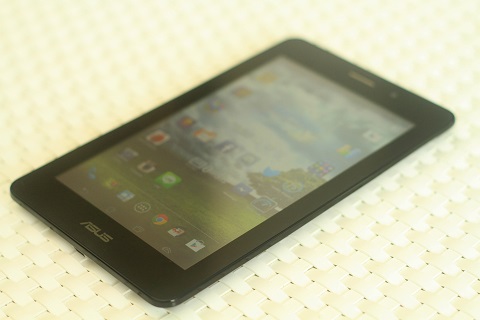We can’t believe that it’s already been two months since we first laid our hands on the ASUS FonePad during its local launch in Mactan, Cebu. After spending a rather brief period of time with the tablet, we guess it’s time for us to share our thoughts about it.
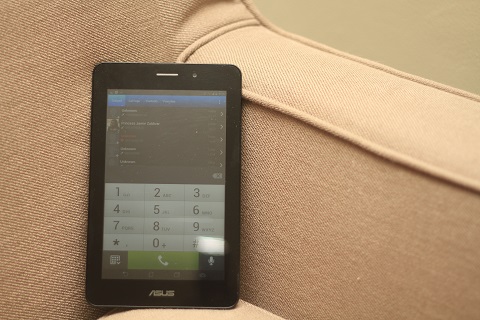
In case you’ve missed it, we’ve already done a short first impression of the ASUS FonePad back in March. It pretty much covered some of the basic stuff about the tablet that we’ll no longer discuss in this review. As such, we suggest skimming through our previous post just to get your feet wet for this review.
Display
Ok, let’s kick things off with the FonePad’s screen. It bears the same display characteristic as the highly-regarded sibling the ASUS/Google Nexus 7 sans the Corning Gorilla glass coating on top. A lot of users consider it as the right size as it’s big enough to give a decent viewing experience while watching flicks, but it’s small enough that the whole device can still fit a sizeable back pocket.
As far as the actual screen performance goes, we can say that it’s on the good side of things. Sure its 217ppi pixel density won’t please any number-crunchers out there, especially after 5-inch, 1080p smartphones are slowly becoming a standard. Still, the FonePad’s screen should be enough to cover your basic display needs as it has good color reproduction and great viewing angles thanks to its IPS display.
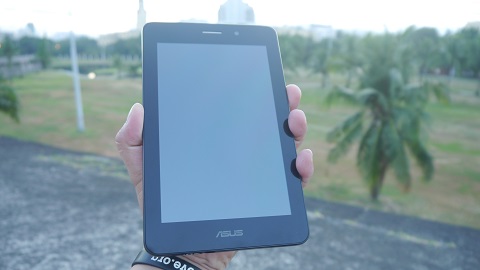
If there’s one thing that we didn’t like about it that would be the brightness. We’re not exactly sure about the rating of the FonePad’s screen in terms of brightness, but we can say that it’s slightly below par compared to other slates in the lot. We immediately noticed this slight deficiency when we used it outdoors. It really isn’t that bad compared to other cheap tablets, (believe me, we’ve seen worse), but it’s certainly not among the best.
OS, UI and Apps
Most of components of the FonePad’s OS, which is Android Jellybean (4.1.2), are stock. Thus both seasoned and new Android users will have no trouble weaving through to the different menus and settings. However, it’s worth noting that ASUS has tweaked some of the functions like the pull-down notification panel to give it a slightly personal touch. Moreover, the Taiwanese firm has added a handful of in-house productivity and artistic apps to give its users something useful right out of the box.

In addition to its native ASUS apps (or some would say bloatwares) the company also decided to include a button right beside the Menu button for a mini App/Widget drawer called Floating Widgets. This brings up a small window with several available widgets that are activated by tapping.
However, unlike other widgets, these ones are omnipresent. Meaning it’ll stay active regardless of the app or screen you’re in unless you close it. Such implementation eliminates the need to switch from app to app which is very useful for tasks that involve two separate applications.

Another thing that’s a bit different from the stock Android is the native keyboard and dialer app. The layout is pretty much the same with only some slight visual alterations, so we expect that users will also pick it up right from the get go.
Multimedia and Camera
Watching films with the ASUS FonePad was rather an enjoyable experience credit its decent display. Playbacks were smooth without any sign of lag in all of the file formats we’ve tested on it. The sound quality was also okay regardless if it’s through an earphone or the speaker at the back. It felt a bit lacking in terms of volume coming out of the speaker, but it won’t be an issue as long as the tablet is used indoors.
Having been equipped with a lackluster 3.15MP snapper at the back, it’s a clear sign that the FonePad isn’t the right tool for capturing great stills. It can produce images that will probably look good in small prints and social media usage, but that’s as far as it goes.
The same can be said for its video recording functionality. It’s bad enough that you can’t shoot at 1080p, to make it worse, the quality of the 720p clips is also a bit disappointing especially in dim conditions.
For a change, this tablet is also equipped with a 1.2MP secondary camera mounted at the front. Again, it’s not as good as the ones found on newer devices, but it should get the job done for video-calling and occasional selfies.
Performance
This is the first Intel-powered Android tablet we’ve reviewed thus far so we we’re quite curious as to how far it can take us. We’ve run our usual benchmark tests on it and the result we got from it is rather respectable, considering that it trumped some of devices with a dual-core processor.

It got a score of 3,769from Quadrant Standard, 7,855 on Antutu and 38.9fps on NenaMark2. Now, these kind of scores are not even close to some of the more better spec’d devices. However, considering that the FonePad is only powered by a single core Intel Atom Z460, this kind of result is actually pretty remarkable.

Now, in terms of actual usage, the FonePad is actually quite good. It was able to breeze through the light tasks such as browsing, simple games and video playback. It was only until we subjected it under a slightly intense pressure like playing Asphalt 7 that it eventually showed signs of lag. Don’t get me wrong, the game was still playable up to some extent, but the difference in gameplay is immediately noticeable compared to multi-core devices.
Connectivity and Call quality
Apart from being one of the few Android tablets to be powered by an Intel Atom processor, another thing that sets this slate apart from other devices in the same category is the inclusion of voice and SMS functionality features. Although not everybody would agree that making/taking calls using the FonePad is the most practical thing to do, there are those who’d prefer having just one device that pretty much handles all their needs instead of owning multiple devices doing little bit of everything.
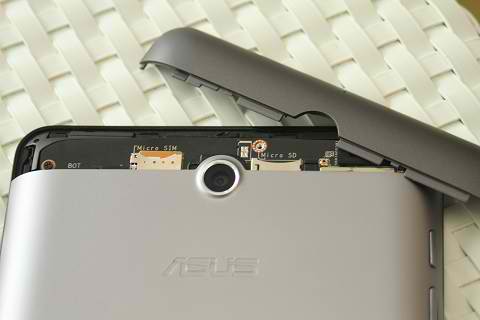
Awkward is it may seem, we tried using the FonePad as our main phone during the course of this review. We’re glad to see that we didn’t experience any major issues along the way apart from a few garbled conversations which is probably due to bad reception.
Battery life
In addition to performance, another thing that tickles our curiosity is how efficient an Atom-powered tablet is when it comes to battery. We loaded an entire season of Hajime No Ippo and watched it using MX Player with an earphone attached. The volume is set to 50% and the screen brightness set to 50%. Here’s the mileage we got from the FonePad.
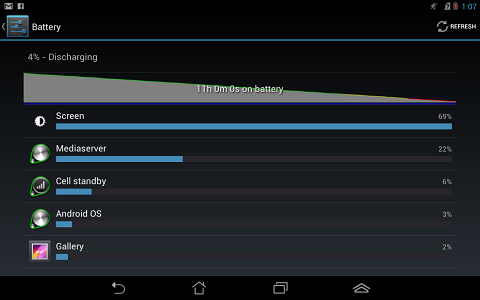
We were able to watch a total of 28 episodes (little under 25 minutes each) which ran for a total of 11 hours. Do note that the tablet doesn’t have a SIM card attached to it during the duration of the test nor was it connected to a WiFi network. Nevertheless, we liked what we saw from the FonePad and we can definitely saw that it’s one of strengths that this tablet has.
Conclusion
The way we see it, the FonePad is more like a Jack-of-all-Trades rather than a device that specializes in certain categories. While it may not excel on one particular aspect, it’s worth noting that the FonePad has a little bit of everything, not to mention its phone functionality, which makes it a viable choice among 7-inchers.
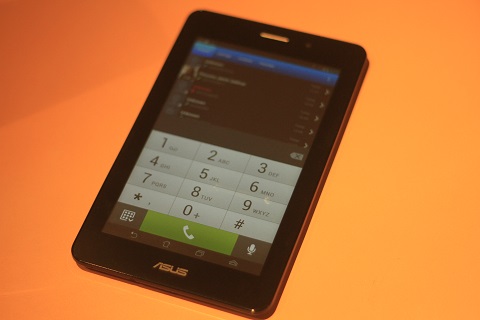
Of course, not everyone has a thing for tablets with phone capability as some would argue that having two separate devices is still more practical. However, if you’re the type of user that prefers a single device that can pretty much do it all, then we think that the ASUS FonePad will suit you quite nicely.
We’re still not certain about the FonePad’s SRP and availability, but we were told that it will be priced under Php15K. We guess we just have to wait for its official launch which is set on the second week of this month.
ASUS FonePad specs:
7″ WXGA (1280×800) IPS touchscreen display, 216ppi
1.6GHz Intel Atom Z2460 processor
PowerVR SGX540 GPU
1GB RAM
32GB internal storage
MicroSD card slot w/ support for up to 32GB
HSPA+
WiFi 802.11 b/g/n
Bluetooth 3.0 w/ A2DP
GPS w/ A-GPS, GLONASS
3.15MP autofocus camera
1.2MP front-facing camera
Non-removable 4270mAh Li-Ion battery
Android Jelly bean
Dimension: 196.4 x 120.1 x 10.4 mm
Weight: 340g
What we liked about it:
* Premium build
* Phone functionality
* Decent battery life
What we didn’t like about it:
* Camera
* Display is a bit dim
* so-so sound performance
The post ASUS FonePad Review appeared first on YugaTech | Philippines, Tech News & Reviews.



